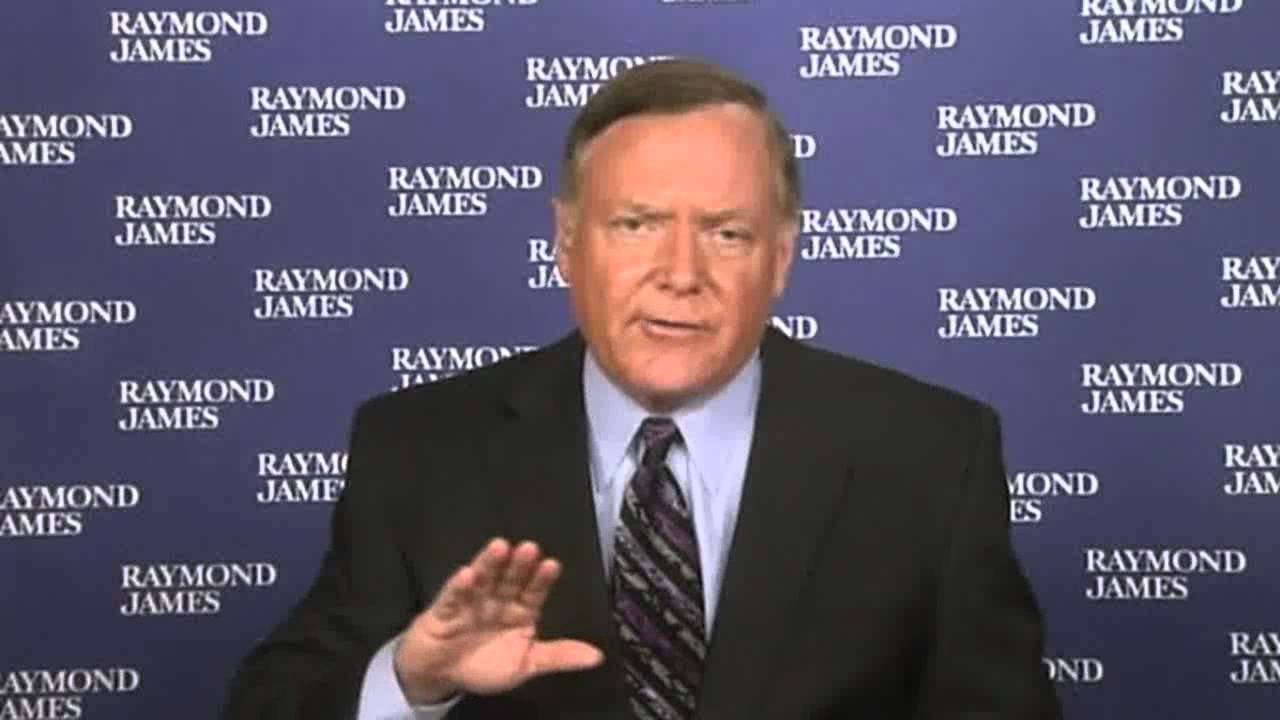by Jeffrey Saut, Chief Investment Strategist, Raymond James
Schadenfreude: is pleasure derived from the misfortune of others.
What a week! We first met with Steve Eisman, and then did a conference call with Rich Bernstein followed by a video with SEI’s portfolio manager Steve Treftz. Subsequently, it was off to visit some more of our new best friends at the Alex. Brown offices in Atlanta and North Carolina . . . I’m exhausted.
For those that haven’t seen the movie “The Big Short,” Steve Eisman became famous for the fortune he made shorting subprime mortgages prior to the financial fiasco of 2007-2009. He was profiled in Michael Lewis’s book, “The Big Short,” and was portrayed by Steve Carrell in the movie (The Big Short). He joined Neuberger Berman in 2014 as a portfolio manager for the Eisman Group, managing a hedge fund in which participants can invest. In the meeting Steve chronicled the sequence of events leading up to the 2008 debacle. He said you need three things for such an event: 1) too much leverage; 2) a big asset class that blows up; and 3) large institutions holding most of the asset class that blows up. At the onset of the financial crisis he said many of the large institutions were leveraged over 30 to 1 allowing the executives of said organizations to make tens of millions of dollars a year in compensation as corporate profits soared. According to Steve those executives confused leverage for genius! Beginning in 2002 mortgage underwriting standards got easier and easier until in early 2007 the standard was “if you can breathe we have a mortgage for you.” Suddenly, in late 2007 the refinance binge came to a halt and the rest, as they say, is history. Steve concluded that Europe is currently sick, the U.S. is likely destined for slow growth because there is not a big enough mortgage refi pipeline to boost the economy, and that Italy is in big trouble. Steve said to be a short selling you need to embrace “Schadenfreude.”
On that sour note, we proceeded to dial up our bullish friend Rich Bernstein (ex-Merrill Lynch star strategist and now eponymous captain of Richard Bernstein Advisors) to begin a conference call to some 500 Raymond James financial advisors (replay: 855.859.2056 / ID: 62645632). Rich said he continues to think this current secular bull market is the biggest/longest of his career, obviously we agree. He said that while statistically this is the second longest bull market on record, it has NO gray hair and there is no excitement which is generally seen at the end of bull markets. He further opined it is amazing investors continue to pile into a VERY expensive bond market on the belief interest rates will stay low forever. That’s interesting because the U.S. money supply is growing faster than average and inflation is doing the same. The implication is interest rates should slowly increase over the longer term. In such an environment cyclical stocks should be favored. He particularly likes the consumer discretionary space, but not consumer staples, which (like me) he believes to be very expensive. Rich thinks the profit cycle for companies has bottomed and the markets are transitioning from an interest rate-driven to an earnings-driven secular bull market. On Brexit, he notes that while the crowd was horrified by that vote predicting the end of the EU, Rich deduced that something always benefits from any event - in Brexit’s case it was the U.K. multinationals, due to the weaker British pound - and he tilted portfolios accordingly. He is becoming more constructive on emerging markets. Rich concluded with the question, “Does anyone know how much the S&P 500 (SPX/2164.69) is up over the trailing 12 months?” Asked and answered, he said it is up 14.6% to the surprise of just about everyone. There are a number of Eaton Vance funds that are managed by Rich for your invest consideration.
From there, we strolled over to our studio to film a video with SEI’s Portfolio Manager Steve Treftz. Steve manages the SEI Multi-Asset Fund (SIOAX/$10.57), and is also in the bullish camp with very similar views to those of Rich and me. He too believes in managing risk. The fund has access to institutional money managers that may not be directly available to advisors and retail investors. Steve uses a multi-manager approach in constructing the Multi-Asset Income Fund to build a comprehensive income strategy believing managers have different expertise in which they can combine and allocate capital to various managers/styles as environments shift. Steve believes proof of concept is important and that his approach enables him to provide a high level of income with an attractive risk/return profile relative to peers. (There is no guarantee this will occur.) The video should be available early this week.
The latter part of the week was spent on the road seeing the good folks at Alex. Brown. For the past month we have been visiting some of the Alex. Brown offices since they have become associated with Raymond James. A few weeks ago Harry Katica, Nick Lacy, and I journeyed to the Alex. Brown offices in D.C., Baltimore, Philadelphia, NYC, Greenwich, and Boston to tell the Raymond James story. Last week we visited the Atlanta and Winston-Salem offices. I am fortunate to have known Alex. Brown in its heyday before Bankers Trust acquired them followed by Deutsche Bank’s purchase of Bankers Trust. I got to see Alex. Brown at its best when I moved to Baltimore to run capital markets, and be director of research, for a Baltimore-based brokerage firm. The “House of Brown’s” bullpen back then was awesome. Nobody had an office because everyone wanted to sit in the bullpen behind the magnificent roll top desks. The firm had topnotch research and investment banking departments and the financial advisors were of the highest quality. While the research and investment banking departments are gone, the advisors we have met with continue to be of the highest caliber. We look forward to working with them.
In our absence the Fed did what we expected, NOTHING. The equity markets responded with a spring-loaded rally that finally breached the S&P 500’s intraday high of 2163.30 made on September 12, 2016 that had contained the upside until last week. The rally, however, did not leap above our 2187 pivot point, which would have given us a buy signal. I do find it interesting that the SPX pulled right back to that 2163 “attractor” level in last Friday’s Fade. Nevertheless, the Fed induced two day “two step” left the McClellan Oscillator very overbought in the short term and my internal energy indicator totally out of energy, so Friday’s pullback should have come as no surprise. The question currently is, “What now?”
Well, my various indicators are somewhat confused. One scenario is that the current pattern is reminiscent of the June-July 2015 timeframe. As Steve Shobin writes, “At that time, the market had an abrupt fall, a quick bounce back to the top, followed by a gut checking decline into mid-August” (August 24’s selling climax and we were bullish). The alternate scenario would be for the SPX to breakout above 2187 and continue to grind higher all the way into 1Q17. That, by the way, would really confuse most participants. In either event the long-term secular bull market remains in force and we will wait for the market to “tell” us what’s next in the short run.
The call for this week: So our models nailed the mid/late-September market vulnerability timeframe and as expected the Fed did nothing. Somewhat surprisingly, stocks leaped on the Fed’s Foible as the Fed cut potential economic growth prospects to the lowest on record. Meanwhile, swooning tax receipts confirm the recently softening economic reports leaving the Citi Economic Surprise Index back to neutral after tagging a three-year high six weeks ago. Meanwhile, the New York Fed released the Empire State Manufacturing Survey, which somehow rose from -4.21 to -1.99 despite the fact that all of its components deteriorated. And after the Dallas Fed told banks to NOT write down the value of their E&P loans, the SEC is now investigating Exxon for not writing down the value of its reserves as things are getting curiouser and curiouser, which is why we continue to exercise patience. As Benjamin Franklin opined, “He that can have patience can have what he will!” Of course, all of this takes a backseat to tonight’s 9:00 p.m. “Clash of the Titians.”
Copyright © Raymond James















